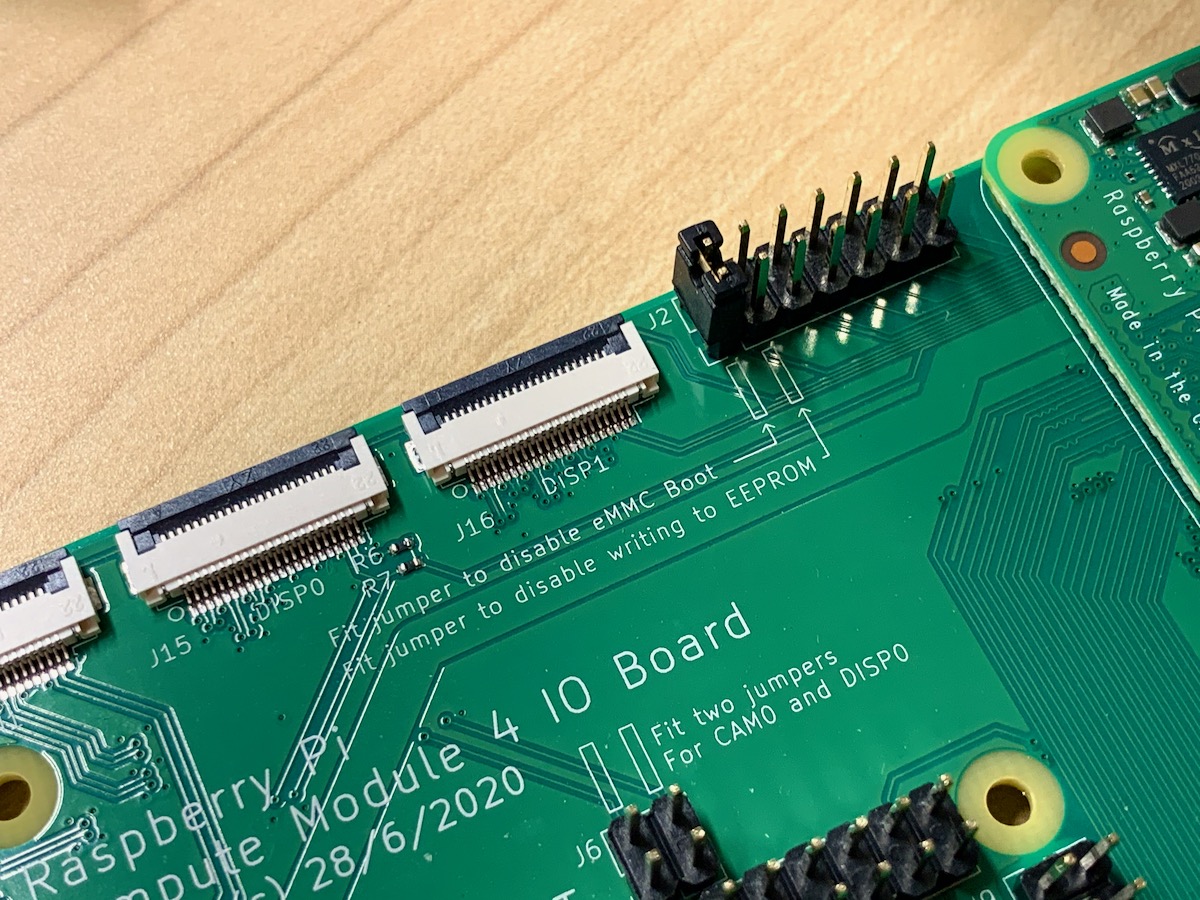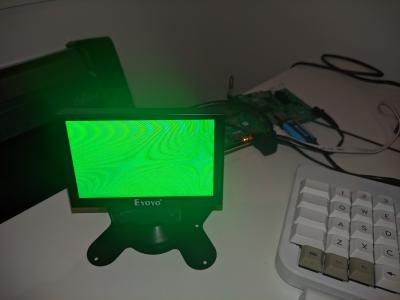Raymii.org

אֶשָּׂא עֵינַי אֶל־הֶהָרִים מֵאַיִן יָבֹא עֶזְרִֽי׃Home | About | All pages | Cluster Status | RSS Feed
Raspberry Pi Compute Module 4 eMMC flashing issue (nRPI_BOOT)
Published: 26-02-2022 | Author: Remy van Elst | Text only version of this article
❗ This post is over three years old. It may no longer be up to date. Opinions may have changed.
Table of Contents
I recently got my hands on a Raspberry Pi 4 Compute Module, 4 GB with 32 GB eMMC flash and a Compute Module 4 IO board. Due to the global chip shortage it's hard to find one in stock but I got lucky by checking rpilocator.com regularly (thanks to Jeff Geerling for that site. He's got amazing Raspberry Pi related content next to a bunch of high-quality Ansible playbooks, go give him a visit).
The eMMC edition I have can only be flashed if you put a jumper on a pin on the I/O board (to put the cm4 in a special mode, nRPI_BOOT) and use a special tool, usbboot. Jeff has a great guide on flashing the cm4 eMMC edition. My cm4 however, was not showing up whenever I put it in this special flashing mode. This article goes over the troubleshooting I did and the eventual solution (hint: hardware problem).
The Raspberry Pi Compute Module 4 (from now on abbreviated as cm4) has 2
versions, a lite edition without eMMC storage and one with onboard eMMC
storage. The lite edition supports booting from an SD card, the eMMC edition
does not. The eMMC cm4 does not have the SD pins wired up, so the microSD
slot on the cm4 I/O board is going nowhere.

eMMC boot pin jumper, picture via Jeff Geerling
The issue
I prepared the board with a jumper, micro USB cable and installed
the rpiboot tool, all as per the official documentation.
But when I powered on the board, no USB device showed up. The
tool kept hanging on Waiting for BCM2835/6/7/2711....
The strange thing however was that the cm4 module booted up fine,
I saw Raspbian on my HDMI display, network was available and I
could ssh into the cm4 just fine. Only when I tried to flash
the storage it failed. The red 'D1' LED turned on, no green ACT led,
but no USB device shows up.
Sometimes I did get dmesg logs on Linux, but they were full of errors:
usb 1-5: new full-speed USB device number 17 using xhci_hcd
usb 1-5: Device not responding to setup address.
usb 1-5: Device not accepting address 8, error -71
usb 1-5: device descriptor read/64, error -71
usb usb1-port5: unable to enumerate USB device
usb usb1-port5: attempt power cycle
I didn't always get log errors like this, sometimes nothing happened.
- I tried a different power supply (12v, 2A) but that didn't help. Board booted just fine, but no USB flashing.
- I tried a few different Micro USB cables.
- I tried a Windows PC. Installed drivers, but no storage / usb appeared.
- Tried a USB 2.0 port as opposed to a USB 3 port.
- Tried a different Linux version (Debian vs. Arch)
I found this topic on the Raspberry Pi forums where they received a broken module, a new one (swapped by Farnell) worked just fine. I was running out of options to try, so I was on the brink of requesting a waranty swap of my module.
The weirdest part was that the cm4 worked just fine in normal mode, Raspbian showed no errors, everything worked, except for the eMMC flashing.
The solution
The cm4 was not mounted correctly in the I/O board, it was screwed in too tight.
I used m2.5 standoffs to screw the compute module into the I/O board. These were so tight, that the compute module was not flat, but a bit convex. Not a lot, but still visibly convex (not flat).
I'm used to screwing in modules, as at work we also have a SOM module that does require tight screws. That is a SO-DIMM socket however, the compute module 4 has two high-speed, high-density 100-pin mezzanine connectors.
I saw a video of Jeff where he just clicked in the cm4, no screwing whatsoever, so I took a closer look at my module, and decided to try it without screws.
After removing the screws and re-seating the board (just a click, no screws),
the issues went away and I can now flash the board as intended with rpiboot:
$ sudo ./rpiboot
RPIBOOT: build-date Feb 22 2022 version 20220208~181027 042cd145
Waiting for BCM2835/6/7/2711...
Loading embedded: bootcode4.bin
Sending bootcode.bin
Successful read 4 bytes
Waiting for BCM2835/6/7/2711...
Loading embedded: bootcode4.bin
Second stage boot server
Loading embedded: start4.elf
File read: start4.elf
Second stage boot server done
This is dmesg output when everything is working correctly:
usb 3-1.2: new high-speed USB device number 34 using xhci_hcd
usb 3-1.2: New USB device found, idVendor=0a5c, idProduct=0001, bcdDevice= 0.01
usb 3-1.2: New USB device strings: Mfr=2, Product=1, SerialNumber=3
usb 3-1.2: Product: Compute Module
usb 3-1.2: Manufacturer: Raspberry Pi
usb 3-1.2: SerialNumber: xxxxxxxx
usb-storage 3-1.2:1.0: USB Mass Storage device detected
scsi host4: usb-storage 3-1.2:1.0
scsi 4:0:0:0: Direct-Access RPi-MSD- 0001 PQ: 0 ANSI: 2
So make sure your cm4 module is not screwed in tightly. It should be flat in the I/O board, not convex.
Here's a photo of my cm4 after the bootloader update was successful:
